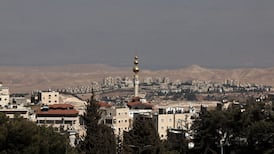As US special envoy Amos Hochstein returns to the Middle East, there is cautious optimism on all sides that conditions are ripe for a Lebanon ceasefire.
Lebanon and Hizbullah have relayed their response to Washington on a draft ceasefire plan, drawn up by Israel and the US. According to Lebanese media, Beirut has agreed to the plan in principle, while Hizbullah’s reply also contains “positive signs”.
The New York Times reports that Iranian supreme leader Ali Khamenei relayed a message to Hizbullah, its most important proxy, urging the group to agree to a ceasefire on the basis of UN resolution 1701, which ended the 2006 Lebanon war, and pull back its fighters to north of the river Litani, some 30km north of the Israeli border in most areas.
US officials said last week said Hochstein would return to the region only if there was significant progress on a deal, which could be finalised before president-elect Donald Trump assumes office in January. Trump is familiar with the terms of the emerging agreement and is known to want a ceasefire in place before he becomes president.
READ MORE
Lebanese parliament speaker Nabih Berri and prime minister Najib Mikati will meet Hochstein on Tuesday and the US envoy will then travel to Israel for talks on Wednesday.
[ Fears grow that Israel is going to wipe Palestinians from northern GazaOpens in new window ]
Mikati told the Qatari news agency Al Arabiya on Monday that he hoped a ceasefire would be reached soon. He said Lebanon’s goal was that UN resolution 1701 be implemented south of the river Litani, that the presence of the Lebanese army on the ground would be increased and that there would be no illegal weapons there.
Despite the optimistic assessments, both Israel and Lebanon stressed there were details that needed to be finalised.
The draft agreement includes the establishment of an international oversight committee, headed by a senior US general, to address issues such as arms transfers to Lebanon and weapons production. Israel is seeking guarantees that if the committee fails to address these issues, Israel, after consulting with the US, will be allowed to act militarily.
The ceasefire agreement also calls for the deployment of up to 10,000 Lebanese soldiers in the area between the Litani and the Israeli border.
Hizbullah started firing rockets at Israel on October 8th, 2023, the day after the Hamas-led attack on Israel. For a year Hizbullah refused to agree to a ceasefire as long as Israel’s war on Gaza continued. Following an Israeli escalation in Lebanon in September this year, during which many Hizbullah leaders and military commanders were killed, Hizbullah dropped the linkage to Gaza, paving the way for a diplomatic breakthrough.
- Listen to our Inside Politics Podcast for the latest analysis and chat
- Sign up for push alerts and have the best news, analysis and comment delivered directly to your phone
- Find The Irish Times on WhatsApp and stay up to date













